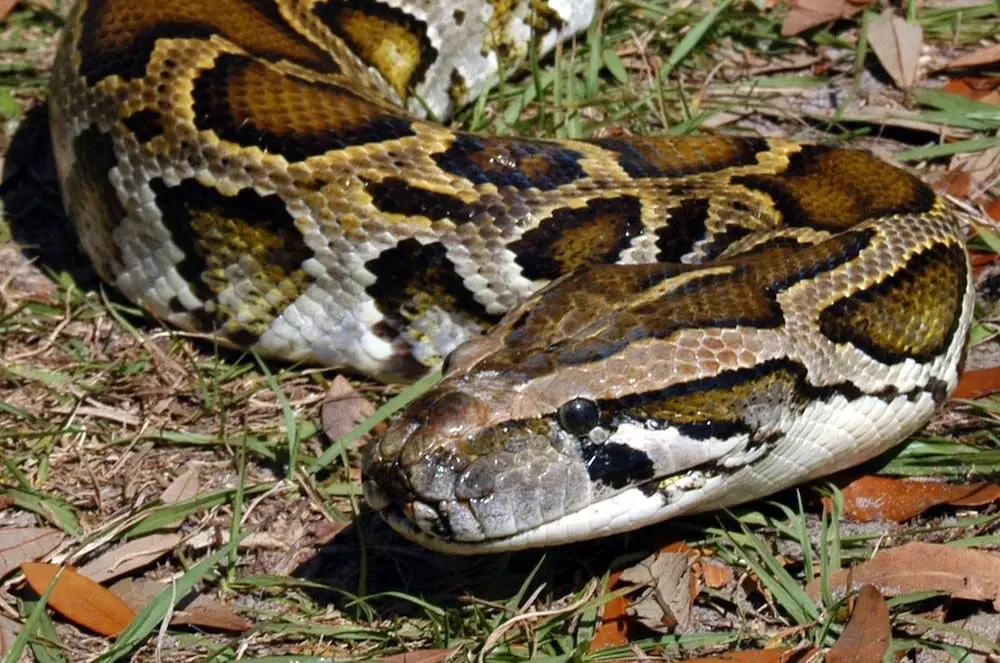
I never think of myself as a role model, but it makes me so happy to have students pull me aside to say that my being here makes them feel like they can do this because we have the same ethnic background. It was very motivating.Īnd now you can be a role model for your students. I’m Cuban and I had never met anyone else with a Latinx background that had success in the field of Ecology. When I read Ariel Lugo’s interview, I found it amazing that he was Puerto Rican and featured in the Ecology section. My undergraduate biology textbook had these interviews with eminent biologists at the beginning of each unit.
:max_bytes(150000):strip_icc()/albino-burmese-python-160431532-5b954a4c4cedfd0025085c38.jpg)
In college, I hadn’t come across any well-known biologists that came from my ethnic background and that made me feel a little alone. So I’d say that my connection to South Florida is originally how I got interested in invasive species. , I realized that the brown anoles all over my house were not native, and we also had these monk parakeets around my elementary school. Taking a step back, did you always know you were going to work in science?īeing from South Florida, I grew up seeing a lot of vertebrates here that are not native.

What happens when the Burmese python is present and how does that change the Everglades ecosystem? This one animal can affect the birds, can affect the mammals, and can have some effect on the reptiles. I wanted to learn more about how this top predator, the python, can affect all the fauna. I started working on pythons because I’m very interested in invasion ecology. If you had told me years ago that I would be working with pythons, I would have laughed. So what is it about pythons that got you hooked? We need to understand how invasive species affect the Everglades ecosystem, especially within the restoration context. I started working in Everglades National Park because I’m from South Florida and the ecosystem here is special to me, and unfortunately there are several invasive species here. She said she only takes those off when working with pythons because “they curl their tails around them.”Ī lot of your research involves work in Everglades National Park. Read more below.Ĭhristina Romagosa in the field, wearing her usual hoops and bracelets.
#BURMESE PYTHON HOW TO#
Today some of her research focuses on invasive Burmese pythons in Everglades National Park-especially what’s inside them.Ĭhristina and I recently discussed her lab’s current snake research projects focused on diet and lung parasites, and she provided me with some insight into how to succeed in science. She overcame that doubt thanks to continued support from her parents and mentors and after being encouraged by another Latinx scientist’s success in Ecology. But because of a lack of role models with her ethnic background, she had some hesitation. Growing up in southern Florida, Christina loved the birds and reptiles she saw in her backyard, and science always interested her as a career. Her research focuses on how ecosystems respond to invasive species, or non-native species that do harm to the ecosystem.

Christina Romagosa is a research associate professor in the University of Florida’s Department of Wildlife Ecology and Conservation in Gainesville, Florida, but much of her work is in South Florida. Romagosa studies what’s inside invasive Burmese pythons and uses that information to see how they are affecting the wildlife in Everglades National Park.īy: Antonia Florio, Science Communications Liaison, Everglades National Parkĭr. Capable of reaching up to 18 feet in length and over 100 lbs.Dr.All are illegal to transport, import, and export in the U.S.In 2012, a report stated that in areas where the snakes are well-established, foxes and rabbits “have disappeared.” Sightings of raccoons are down 99.3%, opossums 98.9%, and white-tailed deer by 94.1%. This shift in predator-prey dynamics has the potential to completely alter the composition of an ecosystem by causing incipient extinctions of native wildlife, influencing vegetation structure and arrangement, influencing the assemblage of native species in the landscape, among many other potential impacts.


 0 kommentar(er)
0 kommentar(er)
